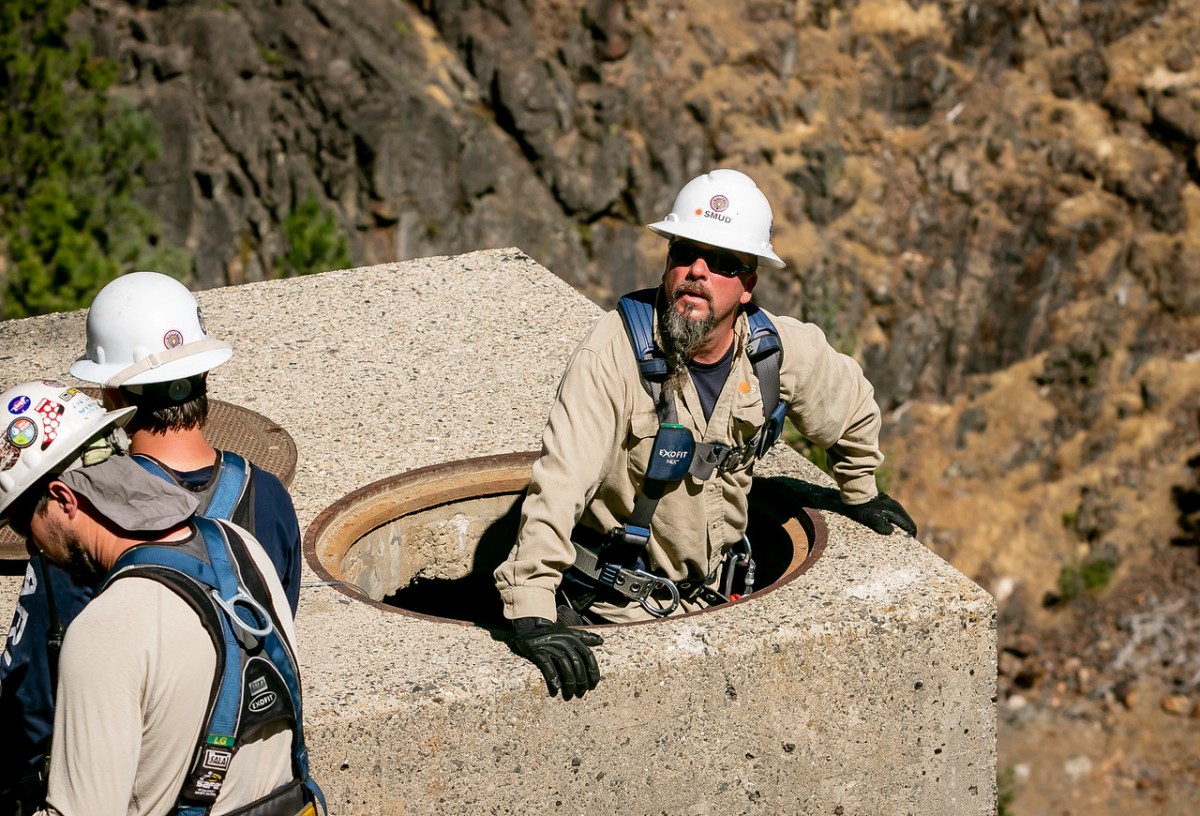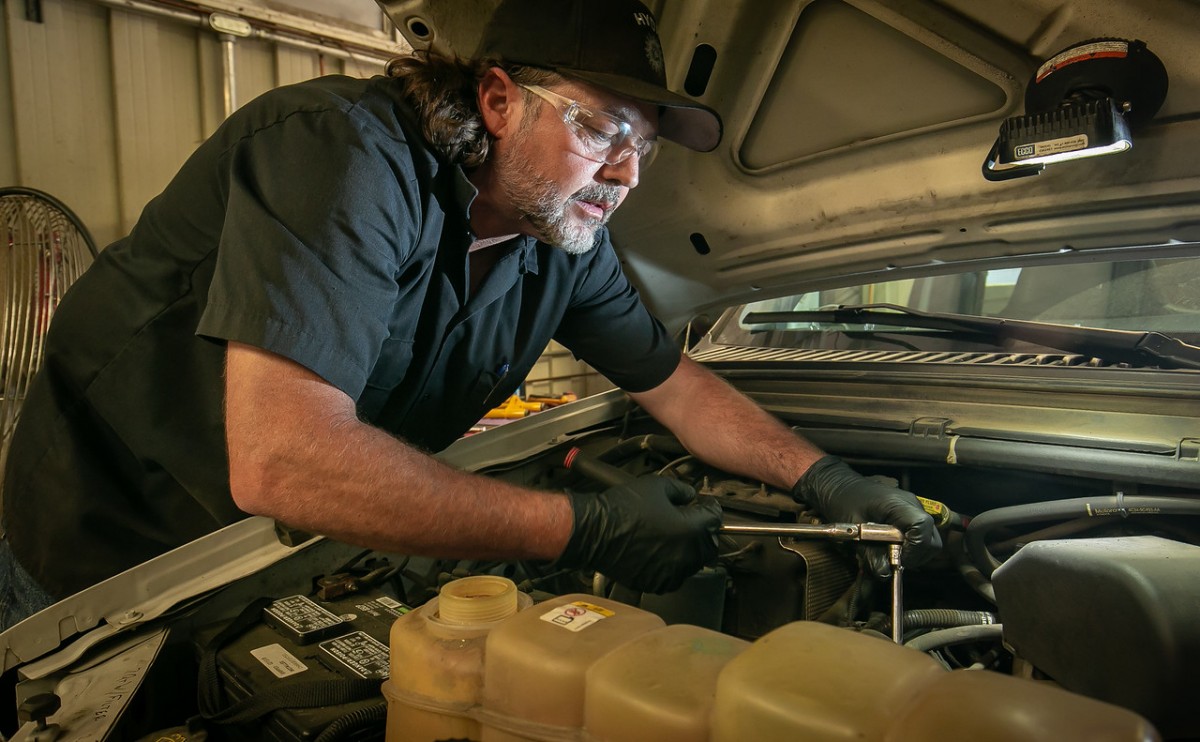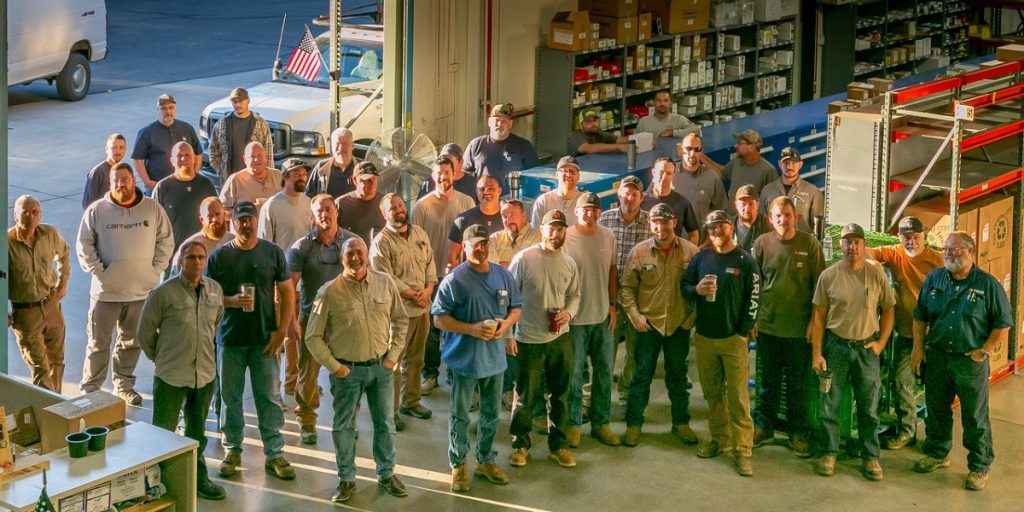
IBEW 1245 members at SMUD’s Upper American River Project
Nestled deep in California’s El Dorado National Forest lies the Upper American River Project (UARP) – a large-scale hydroelectric development that is capable of providing the Sacramento region with up to 20 percent of its peak load. The UARP consists of 9 powerhouses and 11 reservoirs within a series of dams that stretch along the American River basin, contributing 688 megawatts of reliable, economical and emissions-free hydroelectric power to the grid.
This unique clean-energy production project is proudly maintained and operated by IBEW 1245 members employed by the Sacramento Municipal Utility District (SMUD), which owns the UARP. According to SMUD, the UARP generates enough power for 180,000 homes, amounting to roughly 1.8 billion kilowatt-hours of electricity, and is an integral part of SMUD’s energy portfolio. Four years ago, SMUD renewed its federal operating license to continue producing power in the UARP watershed for another 50 years – a win for the region, the state, the environment, and IBEW 1245’s hardworking members.
Upgrades at Jaybird

The Jaybird Powerhouse in Fresh Pond, Calif.
The first power generation from UARP came from the Jaybird Powerhouse, back in 1961, and the eight other powerhouses have come online over the years.
The Utility Reporter caught up with Hydro Electrical Foreman and five-year IBEW 1245 member Chris Lemons as he planned out his day at Jaybird. Lemons, who has been in the industry for twenty years, explained how he and his team are working to modernize Jaybird’s systems to keep up with the latest technology.
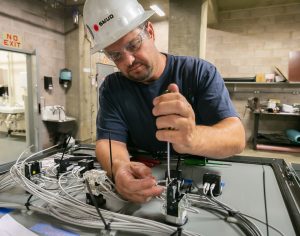
Chris Lemons
“Today I’m wiring up a control panel – we’re upgrading the controls on Generator 1,” he said. “It’s easier on the equipment if they can control it from a computer… so they can see what’s going on with the generator.”
There is a rhythm to Lemons’ days – and to his years. During the hot summer months, when demand for power is at its peak, he spends much of his time ensuring that the system is operating correctly and consistently. That includes taking reads on all the different plants, assessing the health of the units, and trying to find potential issues before they present problems.
When the seasons change and demand is lower, Lemons and his team switch gears.
“In the wintertime, we get in and work on the units. They take an outage and we do basic maintenance,” Lemons explained. “And we fit in a project or two.”
Fast, Flexible Power
Down the river, the Utility Reporter met up with Hydro Power Plant Operator Pete Winter as he headed to the Union Valley Switchyard. He detailed how the power from the UARP contributes to the grid and helps smooth out spikes in demand, keeping the supply reliable for Sacramento residents.
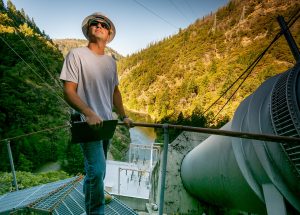
Pete Winter
“(Generators) are controlled depending on what the marketers see fit downtown,” said Winter. “Being that they are hydro units, they are more flexible than say your gas turbine style unit – and they’re a lot more adjustable and faster to bring online. A lot of their use, aside from moving water down, is ramping and fast adjustments needed to accommodate the grid.”
At the switchyard, Winter met up with a group of electricians who were performing rope-assisted cable pulls down the side of a mountain — a skill that proves to be critical in a system with such a wide range in elevation.
“The highest reservoir is at 6,400 feet, all the way down to 1000 feet,” he explained.
A Different Environment
Winter got his start wiring houses as a residential electrician when he was just 18 – and that experience shaped his opinion on unions.
“(I) worked at nonunion commercial outlets, I got a taste of how it is – you come and go on a whim depending on whether they need you or not, there were no benefits, [you’re] asking for your own raises, and there’s no representation, no vacations – it was a different environment,” ne recalled.
And although the recent Janus v. AFSCME Supreme Court decision didn’t come out the way he wanted, he isn’t discouraged.
“A lot of the guys I talk to are now more than ever interested in the union, and they’re committed to still continuing to pay their dues,” Winter said. “They see the benefit and they know what a ‘Right to Work’ atmosphere is like, from working on the outside [of SMUD].”
Photos by John Storey
